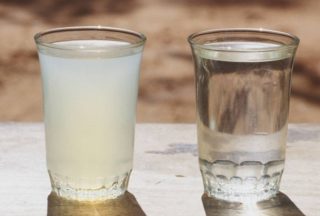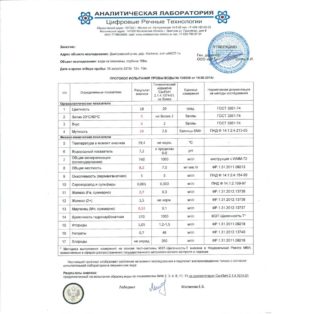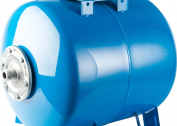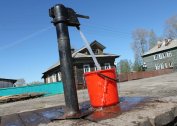Not only the state of plumbing and the performance of household appliances, but also human health depends on the quality of the water used. As you know, the body is 80% water, it follows that the functioning and condition of vital organs and systems depend on the quality of the fluid used. Many homeowners in their household plots are constructing autonomous water supply systems so that the quality is “on top”. However, the composition of the fluid from an artesian well depends on many factors.
How to determine the quality of water from a well at home
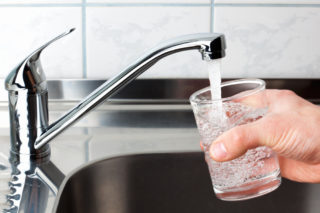
According to statistics, every person uses at least 2 liters of water daily. Not only useful, but also toxic substances can penetrate into the body along with it. Water is a universal solvent that does not occur in nature in its pure form. It can be saturated with both useful macro- and microelements, and pathogenic microorganisms. All this affects the external signs, smell and taste.
Numerous studies by scientists have shown that regular use of low-quality water accelerates the aging process by 30%, and also serves as a provoking factor in 70-80% of cases of disease development.
The main reasons why you need to check the water for potability at home from wells:
- If a well or well is built on a personal plot, only the landlord is responsible for the quality of the water used. Municipal organizations do not have such powers, so you need to check the quality yourself.
- Often, well fluid becomes unusable if, at the design stage of the water supply system, the location of a cesspool nearby was not taken into account. Often during the construction of the latter walls are not cemented, therefore, the soil and waste water are polluted.
- The proximity of industrial and chemical enterprises. If the waste enters the soil, they will poison the waste stream, the liquid will become unusable.
If it is not possible to take samples to the laboratory, you can check the quality of water from the well at home.
How to do well water analysis at home
The easiest way to determine the quality of a fluid is by visual observation. To do this, you need to trust your senses.
Colour
To determine the color with high accuracy, you need to put a white sheet of paper behind a glass glass with the contents. Fluid from a well does not have to be crystal clear and transparent; minor deviations are allowed. The following indicators allow you to determine the quality for color:
- Gray and / or black shade - high content of potassium permanganate (manganese) in the composition.
- A large amount of precipitate falls out, the liquid is cloudy and brown shades prevail in it - a high content of ferrous or ferrous.
- Turbid liquid with a predominance of milky shades - a high concentration in the composition of the gases.
- If, after thermal exposure, red shades begin to predominate in the color, this indicates the presence of iron in the composition.
- The precipitate does not precipitate, but the liquid has a yellowish color - bacteria.
Based on these data, it is possible to find out which chemical elements or pathological organisms prevail in the composition.
Smell
The aroma also allows you to find out whether the well fluid is suitable for use.
- The smell of dampness indicates a high content of organic substances in the composition.
- If a pronounced aroma of foul products is noted, the water is enriched in hydrogen sulfide.
- Pronounced chemical odors, such as fuel and lubricants or plastic, indicate serious contamination. In this case, it is strictly forbidden to use it inside, until thorough laboratory tests are carried out.
Water that is usable should not have any odors.
Taste
This stage of research can only be started if the two previous methods have confirmed the proper quality of the liquid. During the experiment, it is not necessary to swallow the product, just put a small amount into your mouth.
- Salty taste - a high concentration of mineral salts.
- A pronounced smack of metal is the content of ferrous or ferric iron.
- Light tingling of the tongue and mucous membranes of the oral cavity - alkali in the composition.
If the water does not have foreign odors, tastes and aromas, you can expose it to several more ways of checking for quality.
Storage
This method allows you to determine the presence and amount of extraneous impurities in the composition. Pour the liquid into a clean container, close the lid and put in a dark place for several days. If a precipitate has formed or a film has formed on the surface, the water is unsuitable for use due to the high content of harmful impurities.
Thermal impact
When heated, the manifestation of the chemical properties of the well fluid is enhanced. To do this, bring the water to a boil, and then continue to simmer over low heat for 15 minutes. After the water has cooled, you can summarize. The gray color of the scale is high in calcium, and the brownish yellow is iron.
Potassium permanganate test
Regular potassium permanganate will help determine whether water is suitable for consumption. For this, a small amount of the substance is added to the container with the liquid and the reaction is evaluated. Water should be painted in light pink shades. If the yellowish shade prevails, it is better to refrain from using it. This is due to the fact that a large amount of organic substances destroys manganese.
When making tea, pay attention to the transparency of the drink. About 50 ml of raw water is added to a glass of freshly brewed tea. If the drink is cloudy, such a liquid is unsuitable for use due to the large amount of harmful substances, salts and organics in the composition.
Can home analysis replace laboratory
In laboratory conditions, a detailed study of the chemical and bacteriological composition of water is carried out in more than 15 indicators. Unfortunately, not a single home test will give such a detailed and detailed result. If the quality of the liquid in the source is doubtful, and the home methods do not soothe, it is better to take samples to a specialized organization.
Home verification methods are more suitable for routine monitoring of the quality of fluid intake. This should be done regularly, since the composition of the soil and wastewater changes continuously. High intensity of such changes is observed in spring and autumn during the melting of snows and heavy rains.

